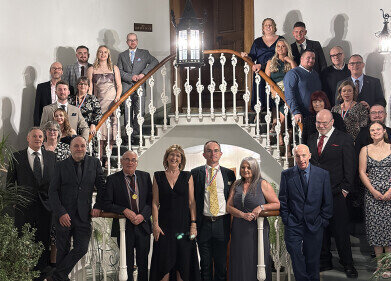Soil remediation
Land: How Is It Mapped and How Have We Destroyed It?
Feb 20 2015
You would think land mapping is as easy as telling the difference between land and sea, right? Wrong! Land change science uses a combination of natural and sociological methodology to map physical land cover and define what land is used for, as well as tracking why land has changed and what consequences that change may have.
How do you map land use?
Mapping land cover is relatively simple. All it takes is aerial observation; is it a forest or desert? Is it urban or rural? Mapping land use is a trickier process. You may be able to see that the land is covered in trees, but what are those trees being used for and why are they there? A tree is a tree, but the difference between forestry, conservation and agriculture is huge.
The process begins with remote sensing and geospatial analysis, which are used to map both cover and use of land to infer the driving force behind land change. Models of cause and effect are then tested to create forecasts that can logically predict the consequences of certain changes in an attempt to promote sustainable land use by landowners and policymakers.
How have humans affected land?
Humans have been changing land since they first stepped foot on it. We began by using fire to clear hunting areas before moving on to more sophisticated methods of agriculture and mining. Then came deforestation to satisfy our desire to build, and finally industrialisation and urbanisation took hold, bringing new heavily populated, and heavily polluted, cities along with them. China in particularly is an example of the amount of population a county can produce, as we discuss is this new story: Are China’s Pollution Problems Too Far-Gone?
We may see our history as an achievement of innovation, but the effect we’ve had on the land we live on is more gloom than boom. Every human transformation of land – whether building a farm, a town or a shopping centre – compromises the biodiversity of that land. Some transformations, like forestry or urbanisation, have an immediate and complete destructive hold, but no transformation comes without a cost. Even rural practices that cause little change to the actual lay of the land, like cattle grazing, result in irreversible changes that can have far reaching consequences.
Climate change and pollution are the direct result of changing land use. Deforestation and agriculture release greenhouse gases known to cause climate change, while land clearance, industry and urban spread pollute our water, air and soil. Land change science is able to rectify some of the damage we have already caused by encouraging sustainability, slowing the onset of climate change and minimising pollution. However, the complexity of the changes humans have already inflicted on the land we use to survive are so complex that working out what impact we’ve really had could be an impossible task.
Events
Jul 15 2025 Brighton, UK
Jul 23 2025 Sydney, Australia
Aug 24 2025 Stockholm, Sweden and online
Aug 27 2025 Busan, South Korea
Sep 02 2025 Mexico City, Mexico














